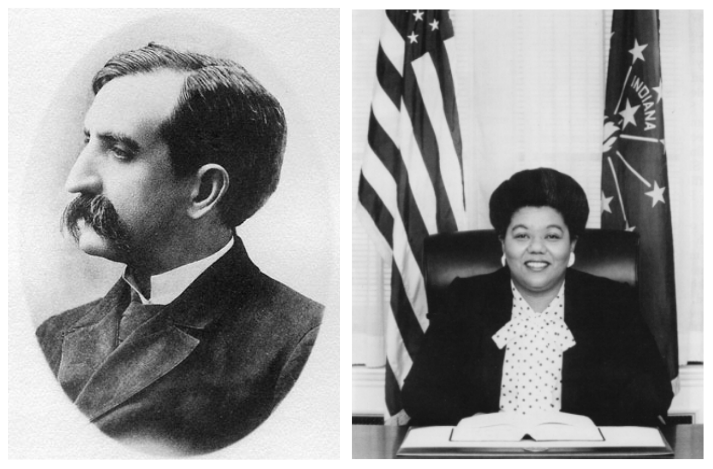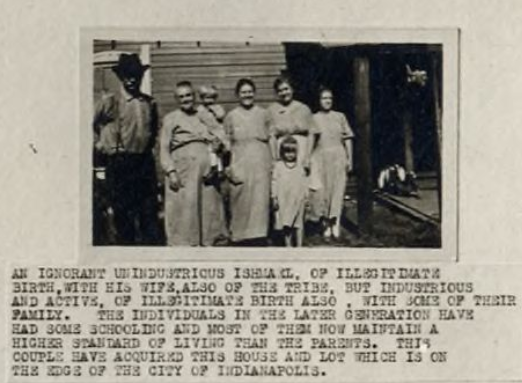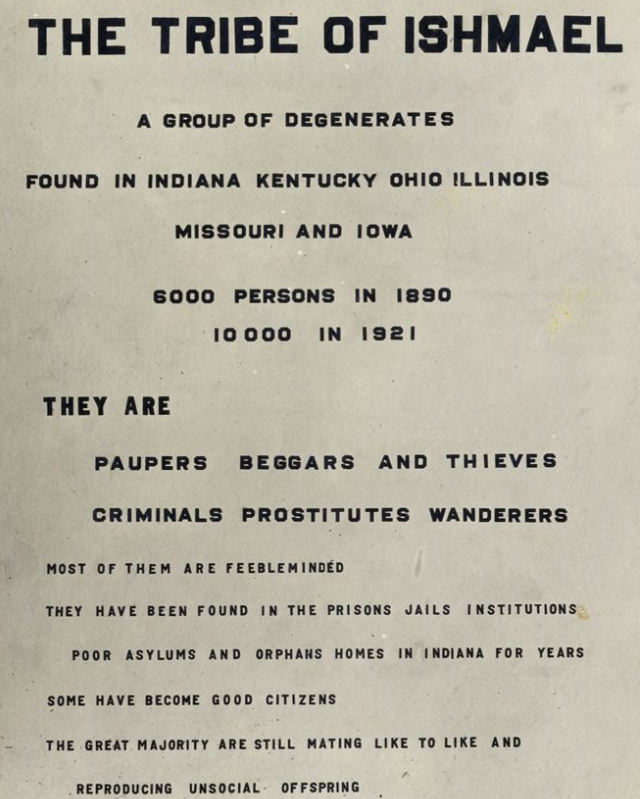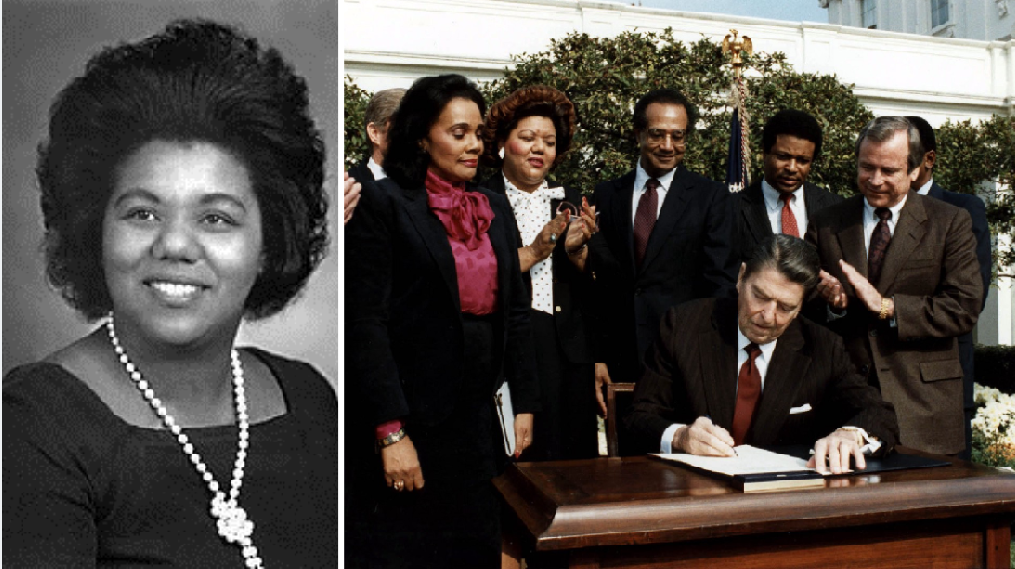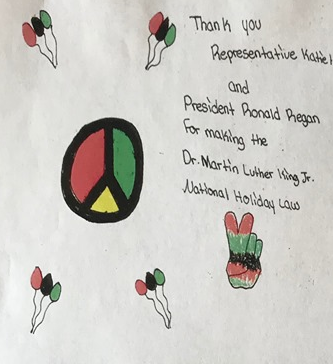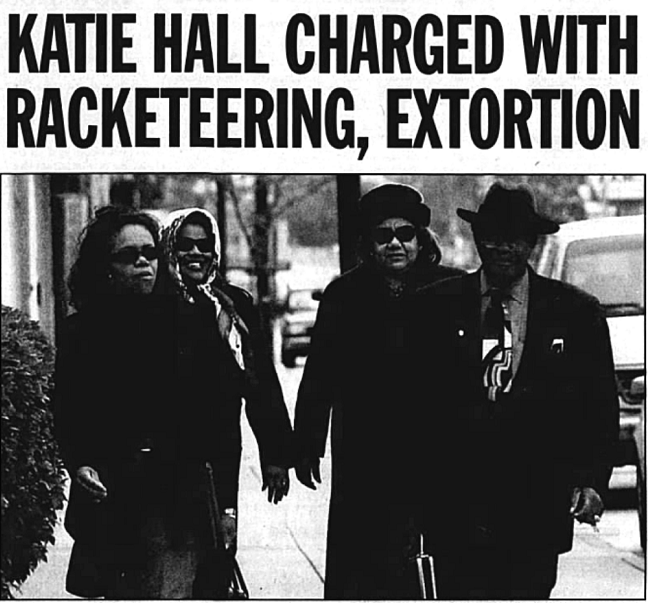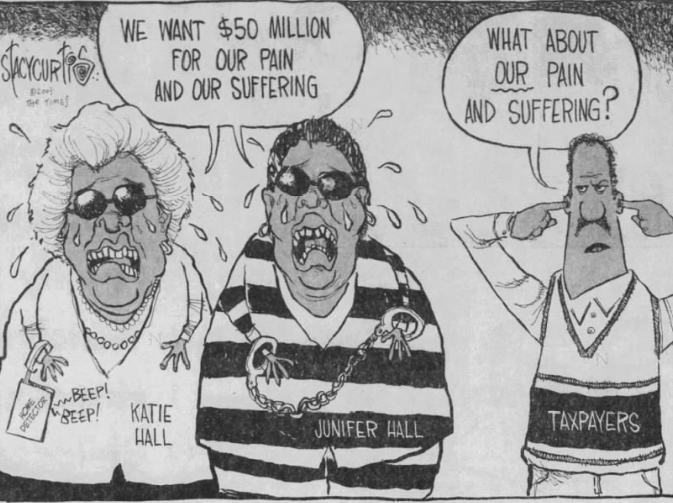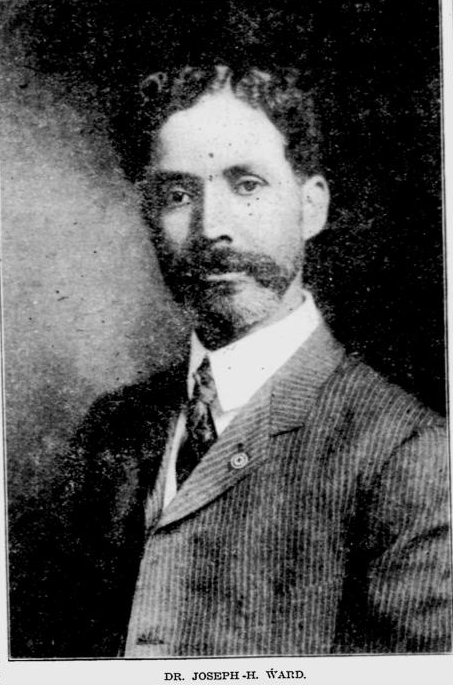
If you scour Scott’s Official History of the American Negro in the World War, On the Trail of the Buffalo Soldier, The Encyclopedia of African American Military History, The African American Encyclopedia, and the Who’s Who of the Colored Race, Dr. Joseph Ward’s name is nowhere to be found. This is a concerning omission, given that his leadership at Tuskegee, Alabama’s Veterans Hospital No. 91. helped prove to some white Jim Crow Southerners, medical practitioners, U.S. military officials, and even President Calvin Coolidge that African Americans were fit to manage large institutions. His significance is two-fold: in an era where African Americans were often excluded from medical treatment, Ward made care accessible to those in Indianapolis and, on a much larger scale, to Southern veterans.
Born in Wilson, North Carolina to Mittie Ward and Napoleon Hagans, Joseph traveled as a young man to Indianapolis in search of better opportunities. In the Circle City, he attended Shortridge High School and worked as the personal driver of white physician George Hasty. According to the African American newspaper The Freeman, Dr. Hasty “‘said there was something unusual in the green looking country boy, and to the delight of Joe as he called him, he offered to send him to school.'”[1] By the 1890s, Ward had earned his degree from Indiana Medical College and practiced medicine in his adopted city. In 1899, The Freeman remarked “The fact that he has risen from the bottom of poverty, th[r]ough honorable poverty, without any assistance, is sufficient evidence to justify our belief in his success in the future.”
Barred from treating Black patients in city hospitals due to institutionalized discrimination, he opened Ward’s Sanitarium and Nurses’ Training School on Indiana Avenue around 1907, which soon garnered the praise of white physicians. He also convinced administrators at the segregated City Hospital to allow Ward’s Black nursing students to attend courses. By enabling them to pass the same state licensing test as white students, he opened professional opportunities to African American women in an era in which they were often relegated to domestic service and manual labor.
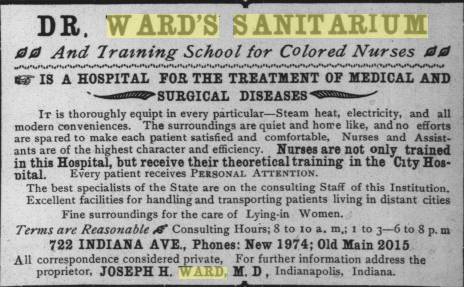
Dr. Ward became as foundational to Indianapolis’s rich Black history as The Freeman publisher Dr. George Knox and entrepreneur Madam C.J. Walker, for whom Ward helped get her professional start. He gave back to his city by helping found the African American Senate Avenue YMCA. During World War I, Ward temporarily left his practice to serve in the Medical Corps in France with the 92nd Division Medical Corps, where he worked as ward surgeon of Base Hospital No. 49. Again, his diligence propelled him to excellence, and he became one of two African Americans to achieve the rank of Major in World War I.[2] In 1924, Dr. Ward’s name was etched into the annals of history, when he became the first African American commander of the segregated Veterans Hospital No. 91 at Tuskegee, Alabama. Ward’s decision to accept the position was itself an act of bravery, coming on the heels of hostility from white residents, politicians, and the Ku Klux Klan.
Initially, the Veterans Bureau placed the new hospital in control of a white staff, despite promising Black personnel they would manage it. After seemingly talking out of both sides of their mouths, Bureau officials gradually began replacing white staff with Black staff due to the unrelenting protest of African Americans across the country. This decision essentially pulled the pin from a grenade. Vanessa Northington Gamble contended in Making A Place for Ourselves: The Black Hospital Movement, 1920-1945 that “White Tuskegeeans saw the fight over the hospital as a ‘test of the supremacy of the Angle-Saxon race’ and were prepared to win the battle by any means necessary.”[3] When African American bookkeeper John C. Calhoun arrived at the hospital to replace his white predecessor, he was handed a letter that warned[4]:
WE UNDERSTAND YOU ARE REPORTING TO HOSPITAL TO ACCEPT DISBURSING OFFICERS JOB, IF YOU VALUE YOUR WELFARE DO NOT TAKE THIS JOB BUT LEAVE AT ONCE FOR PARTS FROM WHENCE YOU CAME OR SUFFER THE CONSEQUENCES, KKK.
He took heed, and an hour after Calhoun fled, approximately 50,000 Klan members marched on Tuskegee and burned a forty-foot cross, before silently marching near the veterans’ hospital. Although violence was avoided, one “fair-skinned” man reportedly “infiltrated the Klan by passing as white” and learned they planned to kill a Black leader and blow up the Tuskegee Institute. The community at large expressed their disapproval of Black leadership by protesting at the White House. Southern politicians did so by writing pieces for the local papers, like State Senator R. H. Powell, who insisted in The Montgomery Advertiser “We know that a bunch of negro officers, with uniforms and big salaries and the protection of Uncle Sam . . . will quickly turn this little town into a place of riot such as has been experienced in so many places where there has occurred an outbreak between the races.”
But President Calvin Coolidge’s Republican administration stood up to the Klan and continued to replace white staff with Black personnel. In a nod to the Confederacy’s defeat in the Civil War, The Buffalo American wrote that the Klan’s demonstration “proved to be another ‘lost cause’ and Negro workers continued to arrive.”[5] With Dr. Ward’s appointment, the hospital’s staff was composed entirely of Black personnel. The hospital’s pioneering practitioners treated Southern Black veterans, many of whom suffered from PTSD following WWI service. Under Ward’s leadership, the Buffalo American reported, patients “are happy, content and enjoying the best of care at the hands of members of their own race who are inheritently [sic] interested in their welfare.” The Montgomery Advertiser noted in 1935 that No. 91 was among the largest U.S. veterans hospitals in the country, offering 1,136 beds, and experiencing a monthly wait list of about 375 patients. In addition to neuropsychiatric treatment, the hospital’s library hosted a bibliotherapy program and patients could view moving pictures and attend dances. The sprawling complex also provided job opportunities for Black laborers, waiters, stenographers, plumbers, and electricians.
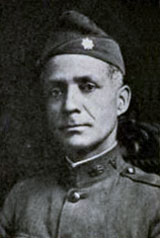
In describing his leadership, Ward’s colleagues recalled that his purpose was firm, demeanor alert, and interactions with subordinates fair. Ward reportedly “amassed an enviable reputation in the Tuskegee community. His legendary inspection tours on horseback and his manly fearlessness in dealing with community groups at a time when there was a fixed subordinate attitude in Negro-white relations are two of the more popular recollections.”[6] He proved so adept as a leader that the War Department promoted him to Lieutenant Colonel. A 1929 editorial for the Journal of the National Medical Association praised Ward for his ability “to win over to your cause the White South.”[7] The author added that Ward “has served as an inspiration to the members of the staff of the hospital. He has stimulated original observation and contributions”[8] and noted “‘Those who led the opposition to the organization of a Negro personnel openly and frankly acknowledge their mistake and their regret for the earlier unfortunate occurrences.'”[9]
President Coolidge affirmed these characterizations in an address to Congress. Howard University conferred an honorary Master of Arts degree upon Ward for honoring his profession “under pioneer conditions of extraordinary difficulty.”[10] The accolades go on. In regards to this praise, Ward was characteristically humble, stating in The Buffalo American on October 30, 1924, “‘My associates have worked as though they realized that not only them personally, but the entire group was on trial and whatever success we have had was due to that spirit.'”
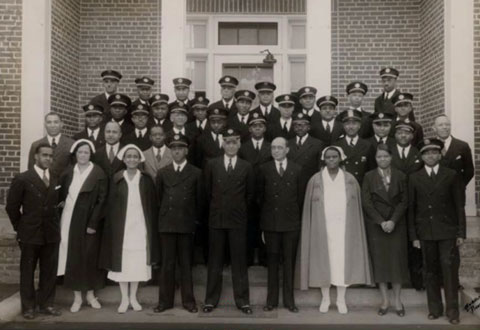
Years after Ward’s appointment, racial tension had not entirely dissipated. In 1936, a federal grand jury charged Ward and thirteen others on the hospital’s staff with “conspiracy to defraud the Government through diversion of hospital supplies.” After more than eleven years of service, the esteemed leader was dismissed “under a cloud,” and he plead guilty to the charges in 1937.[11] Black newspapers provided a different perspective on Ward’s rapid descent from grace. According to The New York Age, Black Republicans viewed the “wholesale indictment of the Negro personnel” at Veterans Hospital No. 91 as an attempt by Southern Democrats to replace Black staff with white, to “rob Negroes of lucrative jobs.”[12] The paper added that these Southern Democrats tried to “take advantage of the administration of their own party in Washington and oust colored executives on charges they would not have dared to file under a Republican regime.” These Black employees, the paper alleged, became the “hapless victims of dirty politics.” Given the previous attempts of the white community to usurp control of the veterans hospital, one is tempted to see truth in this interpretation. After Ward’s dismissal, he quietly returned home to Indianapolis and resumed his private practice, which had moved to Boulevard Place. He practiced there until at least 1949 and in 1956 he died in Indianapolis.
The struggle for leadership of the new veterans hospital shifted the threat of African American autonomy from theoretical to real for the white Jim Crow South. It exposed the organizational capabilities of the white community in terms of protesting the possibility of this autonomy. It also exposed the capabilities of the Black community in terms of demanding their own governance, efforts Dr. Ward ensured were not made in vain. The young man who journeyed out of the South in search of better opportunities later returned to create them for others. Yet somehow his efforts are virtually absent from the historical record. With the help of doctoral student Leon Bates, IHB is changing that this summer by commemorating Lt. Col. Joseph H. Ward with a historical marker.
SOURCES USED:
Dr. Joseph H. Ward historical marker notes.
FOOTNOTES:
[1] “Dr. Joseph H. Ward,” The Freeman: An Illustrated Colored Newspaper (Indianapolis), July 22, 1899, 1, accessed Google News.
[2] “Maj. Ward Back from U.S. Work,” The Indianapolis Star, June 29, 1919, accessed Newspapers.com. “Dr. Joseph H. Ward,” The Freeman: An Illustrated Colored Newspaper (Indianapolis), July 22, 1899, 1, accessed Google News.
[3] Gamble, 90.
[4] Quotation from Gamble, 92.
[5] “Making Good at ‘The Tuskegee’ United States Veterans’ Hospital, No. 91,” The Buffalo (New York) American, 6, accessed Newspapers.com.
[6] Dr. Clifton O. Dummett and Eugene H. Dibble,”Historical Notes on the Tuskegee Veterans Hospital,” Journal of the National Medical Association 54, no. 2 (March 1962), 135.
[7] Editorial, “The U.S. Veterans’ Hospital, Tuskegee, Ala., Colonel Joseph Henry Ward,” Journal of the National Medical Association 21, no. 2 (1929): 65-66.
[8] Ibid., 67.
[9] Ibid., 66.
[10] “Col. Ward,” Baltimore Afro American, June 13, 1931, accessed Newspaper Archive.
[11] “Dr. Dibble Succeeds Col. Ward as Head of Tuskegee Hospital,” The Pittsburgh Courier, accessed Newspapers.com; Colonel Indicted in Food Stealing,” The Montgomery Advertiser, July 10, 1936, accessed Newspapers.com; “Two Plead Guilty in Hospital Case,” The Montgomery Advertiser, March 25, 1936, accessed Newspapers.com.
[12] “Charge Southern Democrats Seek Control of Veterans Hospital at Tuskegee, As 9 Others Are Indicted,” The New York Age, October 3, 1936, accessed Newspapers.com.

